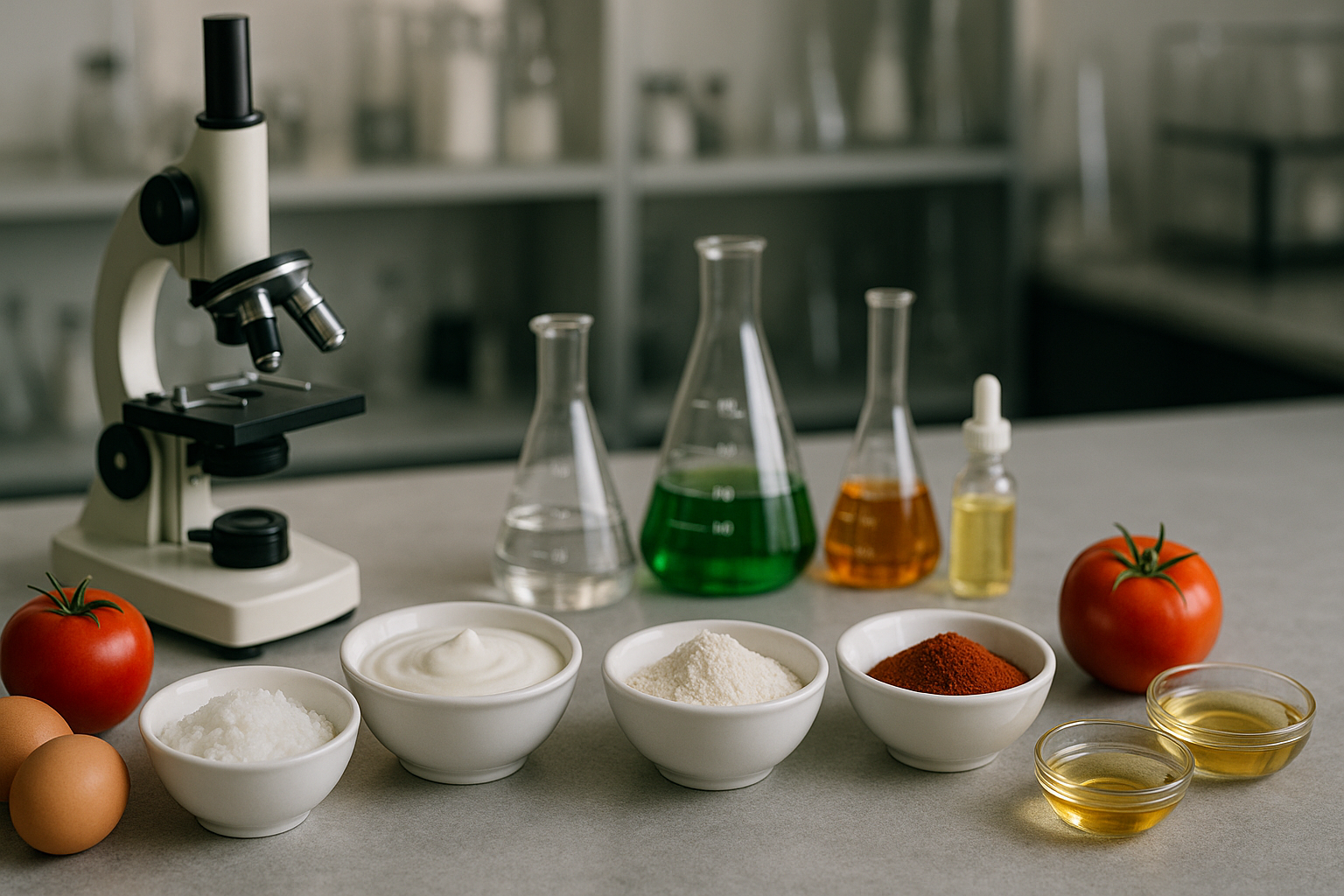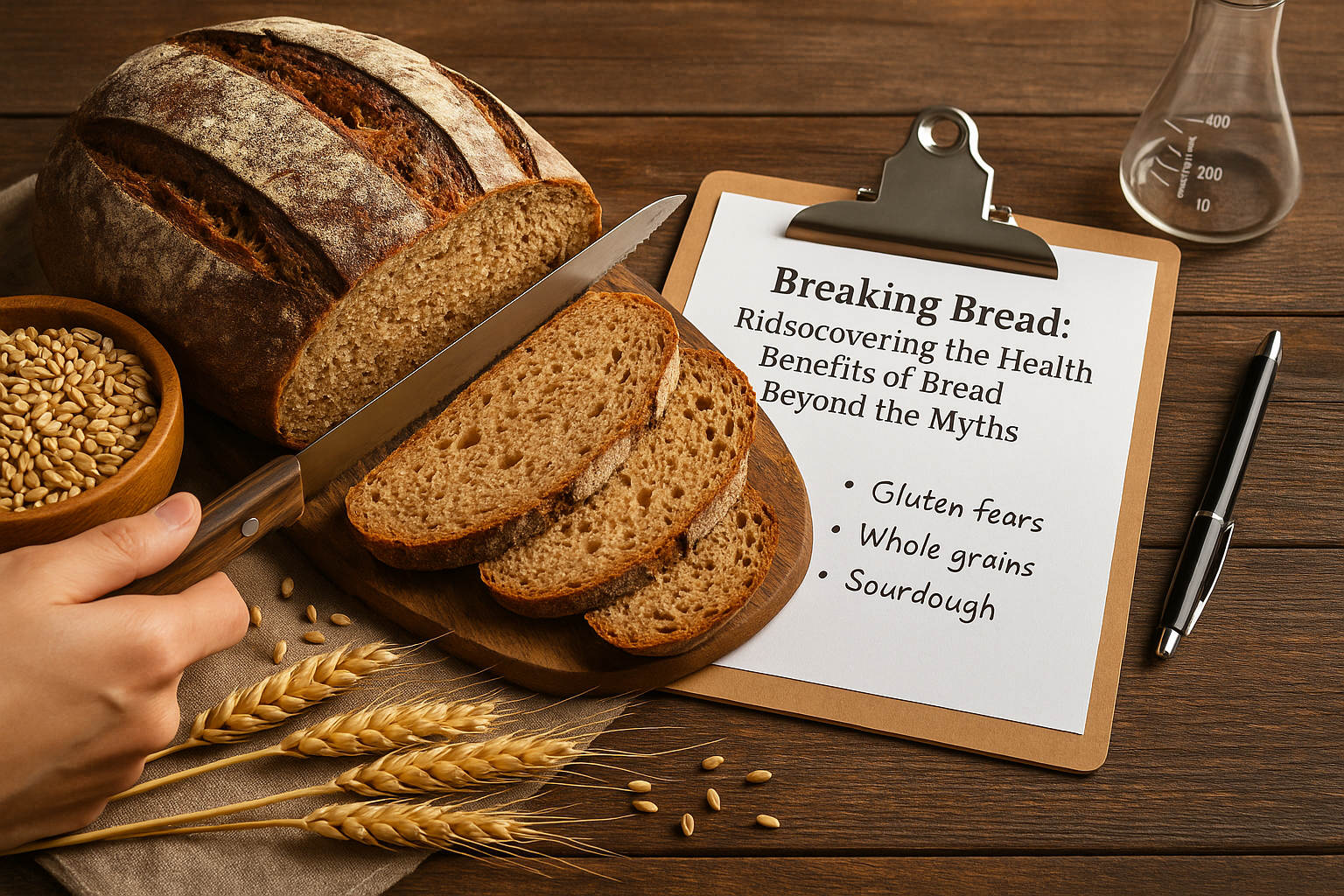
Unraveling the Impact: How does pH affect viscosity and gelation?
SUBSCRIBE TO OUR BLOG
Promotions, new products, and recipes.
Understanding the relationship between pH and its effects on viscosity and gelation is vital for industries ranging from food to pharmaceuticals. In this comprehensive guide, we will explore the scientific principles and practical applications behind pH-related changes in viscosity and gelation. We will discuss the mechanisms through which pH alterations influence these properties, examine real-world examples, and provide insights into pH adjustment techniques for viscosity and gelation control.
Key Takeaways
- pH plays a crucial role in controlling viscosity and gelation in various industries
- Understanding the scientific principles underlying the pH-viscosity and pH-gelation relationship is essential
- pH adjustments can either increase or decrease viscosity and promote or inhibit gelation, depending on the substance and application
- Various techniques are available for pH adjustment, but achieving desired outcomes can be challenging
- pH control has a wide-reaching impact on industries, from paints and coatings to pharmaceuticals
Introduction to pH and its Role in Viscosity Control
Before we delve into the interplay between pH and viscosity, it is essential to establish a foundational understanding of pH and its role in controlling viscosity. pH is a measure of the acidity or basicity of a solution and ranges from 0 to 14, with 7 being neutral. Acids have a pH below 7, while bases have a pH above 7.
The concentration of hydrogen ions (H+) in a solution determines its pH, with higher concentrations indicating greater acidity. pH is a crucial factor in determining the properties of a solution, including its viscosity, density, and solubility.
Viscosity refers to a fluid's resistance to flow and is affected by several factors, including temperature, pressure, and molecular size. pH also plays a significant role in viscosity control. The pH of a solution determines the degree of ionization of the molecules in the solution, which affects the forces of attraction between the molecules. Thus, pH adjustments can alter the molecular interactions and, in turn, influence the viscosity of the solution.
By understanding the fundamental role of pH in viscosity control, we can gain insights into the specific ways in which pH adjustments can influence the flow properties of different solutions and enable industries to optimize their products' physical properties.
pH's Influence on Viscosity: The Science Behind it
Viscosity, the measure of a fluid's resistance to deformation, is influenced by a range of factors, including temperature, pressure, and shear rate. However, pH is an often-overlooked factor that can significantly impact a fluid's viscosity.
pH, which measures the acidity or alkalinity of a solution, can affect viscosity through various mechanisms. One key mechanism involves the influence of pH on molecular interactions, such as hydrogen bonding and ionization. At different pH levels, these interactions can either strengthen or weaken, leading to changes in the flow properties of liquids.
For example, in aqueous solutions containing polymers or proteins, pH adjustments can affect the solubility and electrostatic interactions between molecules, ultimately affecting viscosity. Similarly, for surfactant solutions, pH can alter the micelle structure and size, impacting the flow properties of the fluid.
Furthermore, changes in pH can also affect the degree of hydration of molecules in the solution, which can in turn impact viscosity. The degree of hydration can influence the size and shape of molecules, affecting their packing and interactions with other molecules within the fluid.
Overall, understanding the scientific principles behind pH's influence on viscosity is crucial for industries seeking to optimize their products' physical properties. By controlling pH, companies can achieve desired viscosity outcomes, enhancing their products' performance and appeal.
pH-Viscosity Relationship in Different Substances
The relationship between pH and viscosity varies significantly across different substances. For instance, in the food industry, pH can affect the texture and stability of products such as sauces and beverages. In acidic conditions, whey protein solutions can form gels with higher viscosity due to the aggregation of protein molecules. Similarly, the addition of acids such as citric acid can lower the pH of fruit juices, leading to increased viscosity and cloudiness.
Conversely, in the personal care industry, pH adjustments can lower the viscosity of shampoos and conditioners. Shampoos with low pH values have a thinner consistency and are better suited for oily hair, while conditioners with higher pH values have a thicker consistency and are ideal for dry hair. Additionally, pH control plays a critical role in the production of pharmaceutical suspensions. The use of acids or bases can modulate the pH of suspensions, affecting the suspension's viscosity, sedimentation, and particle size distribution.
Overall, pH adjustments can have a significant impact on the viscosity of various substances. Understanding the specific pH-viscosity relationship for each substance is crucial for selecting the appropriate pH modifier and achieving the desired viscosity outcomes.
pH's Influence on Gelation: Exploring the Mechanisms
Gelation, the process by which a liquid transforms into a gel, is heavily influenced by pH. At the molecular level, pH changes can alter polymer networks and molecular crosslinking, leading to variations in gel properties.
Hydrogen bonding plays a critical role in pH-related gelation. At low pH levels, hydrogen bonding between polymer chains is disrupted, hindering gel formation. Conversely, at high pH levels, hydrogen bonding is strengthened, leading to firmer gels.
Ionization is another key mechanism behind pH-induced gelation changes. In acidic environments, carboxylic acid groups on polymers donate protons, becoming ionized and repelling each other, which can inhibit gelation. However, at alkaline pH, these groups accept protons, neutralizing the groups, and promoting gelation.
The type of polymer also plays a role in the pH-gelation relationship. For example, gelatin, a protein-based polymer used in food and pharmaceuticals, exhibits different gel properties at different pH levels. At low pH, gelatin dissolves and experiences depolymerization, leading to decreased gel strength. Conversely, at higher pH levels, gelatin undergoes crosslinking, leading to stronger gels.
Overall, the mechanisms through which pH influences gelation are complex and varied, and depend heavily on the specific substance and pH environment. Understanding these mechanisms is crucial for industries relying on gelation, such as personal care and food production.
pH's Effect on Gelation: Case Studies
Case studies from various industries provide practical insights into the effects of pH on gelation. Understanding these examples highlights the importance of pH control in achieving desirable gelation outcomes.
"In the production of pharmaceutical suspensions, pH adjustments can impact the gelation properties of the product. For example, a study found that increasing the pH of a suspension containing a weakly basic drug led to the formation of a stronger gel network due to increased drug ionization. On the other hand, decreasing the pH weakened the network, making it more prone to syneresis."
- A. Stathopoulos et. al, International Journal of Pharmaceutics
In the food industry, pH adjustments also affect the gelation properties of certain products. For example, in the production of yogurt, pH adjustment is a crucial step in achieving the desired texture. A study found that increasing the pH of the yogurt mix increased the strength of the gel network, resulting in a firmer and more stable texture.
On the other hand, in the personal care industry, pH adjustments can impact the gelation properties of hair products. A case study found that adjusting the pH of a hair gel affected its holding ability. The study showed that a higher pH resulted in a stronger gel network and improved holding power.
These case studies demonstrate the important role that pH control plays in gelation across different industries. By understanding how pH adjustments can impact gelation, industries can optimize their product formulations to achieve desired physical properties.
pH Adjustment Techniques for Viscosity and Gelation Control
There are several techniques for adjusting pH to control viscosity and gelation in various industries. pH modifiers such as acids or bases can be used to achieve the desired pH level for a specific product.
One common technique is titration, where a solution of known pH is added to the product until the desired pH is reached. This method is effective for small-scale processes but is time-consuming for larger-scale productions.
Another technique is the addition of acids or bases directly to the product. This method is faster than titration and is suitable for larger-scale productions. However, it can be challenging to achieve precise pH levels with this method.
Buffer solutions can also be used to stabilize the pH level in a product. Buffer solutions consist of a weak acid or base and its conjugate, which can resist changes in pH when small amounts of acid or base are added.
Industries that require precise pH control for viscosity and gelation include the food, cosmetics, and pharmaceutical industries. In the food industry, pH adjustment is crucial for achieving the desired texture and consistency of products such as sauces, jams, and jellies. The cosmetics industry relies on pH control to ensure the stability of emulsions and the effectiveness of preservatives. The pharmaceutical industry requires precise pH control for drug delivery systems and to ensure the stability and efficacy of medicines.
Overall, pH adjustment techniques play a critical role in controlling viscosity and gelation in various industries. By understanding the science and practical applications of pH control, industries can optimize their products' physical properties and achieve desired outcomes.
Applications and Industries Benefiting from pH Control
pH control is an essential aspect of numerous industries, impacting a wide range of products and applications.
In the food industry, pH control is vital for achieving desired texture and flavor in products such as jams, jellies, and baked goods. By adjusting pH levels, manufacturers can control the rate of gelation and dissolution, resulting in smooth and creamy textures or firm and dense structures. The beverage industry also heavily relies on pH control to ensure consistent taste and shelf-life stability in products such as soft drinks and juices.
In the cosmetics industry, pH control impacts the formulation, stability, and texture of products such as lotions, creams, and shampoos. By adjusting pH, manufacturers can control the thickness and spreadability of products, as well as improve their resistance to microbial growth and oxidation.
pH control is also critical in the pharmaceutical industry for ensuring the efficacy and safety of drugs. The solubility and bioavailability of drugs are heavily influenced by pH levels, and slight variations in pH can significantly impact drug absorption and release.
Other industries that benefit from pH control include the production of paints and coatings, where pH affects the viscosity and drying time of paints, and the paper industry, where pH impacts the quality and brightness of paper products.
In summary, pH control is a vital aspect of many industries' product development and innovation. By understanding the principles of pH control and its impact on viscosity and gelation, manufacturers can optimize their products' physical properties and meet the specific needs of their target markets.
Conclusion
As we have explored in this comprehensive guide, the influence of pH on viscosity and gelation is a complex and multifaceted phenomenon. The interplay between pH and these properties is crucial for a range of industries, including food, cosmetics, and pharmaceuticals, which rely on precise manipulation of these physical properties to produce high-quality products.
By understanding the fundamental scientific principles underlying the influence of pH on viscosity and gelation, as well as the specific techniques for pH adjustment, industries can achieve their desired outcomes and optimize their products' physical properties. pH control opens up new possibilities for product development and innovation, enabling industries to create unique and differentiated products that meet consumer needs and preferences.
The Future of pH Control
As research on pH and its impact on viscosity and gelation continues to evolve, we can expect to see new innovations and applications emerge. There is increasing interest in developing sustainable and environmentally friendly processes for pH control, such as the use of natural acids and bases, to meet growing consumer demand for eco-friendly products.
Furthermore, the combination of machine learning and advanced data analytics is enabling industries to optimize their pH control strategies and achieve greater precision and efficiency. This is opening up new possibilities for precision manufacturing and customized product formulations.
In conclusion, pH control is an essential tool for industries seeking to produce high-quality products with desirable physical properties. By leveraging the scientific principles and practical applications of pH control, industries can achieve their desired outcomes and unlock new possibilities for innovation and growth.
FAQ
How does pH affect viscosity and gelation?
pH has a significant impact on viscosity and gelation. Changes in pH can alter the molecular interactions in a substance, affecting its flow properties and its ability to form a gel. Understanding this relationship is crucial for industries such as food, cosmetics, and pharmaceuticals.
What is pH and how does it control viscosity?
pH is a measure of the acidity or alkalinity of a substance. It controls viscosity by influencing the molecular interactions within the substance. Substances with higher pH values tend to have lower viscosities, while substances with lower pH values tend to have higher viscosities.
What are the scientific principles behind pH's influence on viscosity?
pH affects viscosity by influencing hydrogen bonding and ionization, which are molecular interactions that determine the flow properties of a substance. Changes in pH can disrupt or enhance these interactions, ultimately altering the substance's viscosity.
Does pH's influence on viscosity vary in different substances?
Yes, the pH-viscosity relationship can vary across different substances. For example, certain food products may require specific pH adjustments to achieve the desired viscosity, while personal care products may have different pH requirements for optimal viscosity control.
How does pH affect gelation?
pH plays a role in gelation, which is the process of transforming a liquid into a gel. It influences the formation of polymer networks and molecular crosslinking, which are essential for gelation. A change in pH can either promote or inhibit gelation, depending on the specific substance and conditions.
Can you provide examples of pH's effect on gelation in different industries?
Certainly! In pharmaceutical suspensions, pH adjustments are often made to control the formation of gels for better drug delivery. In the food industry, pH is crucial for achieving the desired texture and stability of gels in products like jams, jellies, and custards.
What are some techniques for pH adjustment in viscosity and gelation control?
pH adjustment techniques include the use of acids and bases to change the acidic or alkaline nature of a substance. These techniques can be used to raise or lower pH levels, thereby manipulating viscosity and gelation properties. However, careful consideration and understanding of the specific substance and its requirements are essential.
Which industries benefit from pH control in viscosity and gelation?
pH control is beneficial in a wide range of industries. Paints and coatings rely on pH control to achieve the desired thickness and consistency. Personal care products, such as lotions and creams, use pH adjustments for optimal viscosity and gelation properties. Pharmaceutical formulations often require precise pH control to ensure efficient drug delivery.
In conclusion, what is the importance of understanding pH's influence on viscosity and gelation?
Understanding how pH affects viscosity and gelation is vital for industries seeking to optimize their products' properties. By manipulating pH, industries can achieve desired viscosity and gelation outcomes, leading to improved product performance and innovation.
We recommend reading: How to Improve Food Texture Using Hydrocolloids – Cape Crystal Brands

About the Editor
About the Chef Edmund: Chef Edmund is the Founder of Cape Crystal Brands and EnvironMolds. He is the author of several non-fiction “How-to” books, past publisher of the ArtMolds Journal Magazine and six cookbooks available for download on this site. He lives and breathes his food blogs as both writer and editor. You can follow him on Twitter and Linkedin.


|
About the Author Ed is the founder of Cape Crystal Brands, editor of the Beginner’s Guide to Hydrocolloids, and a passionate advocate for making food science accessible to all. Discover premium ingredients, expert resources, and free formulation tools at capecrystalbrands.com/tools. — Ed |
Enjoyed this post? Subscribe to The Crystal Scoop
Food-science tips, ingredient know-how, and recipes. No spam—unsubscribe anytime.
- Choosing a selection results in a full page refresh.



